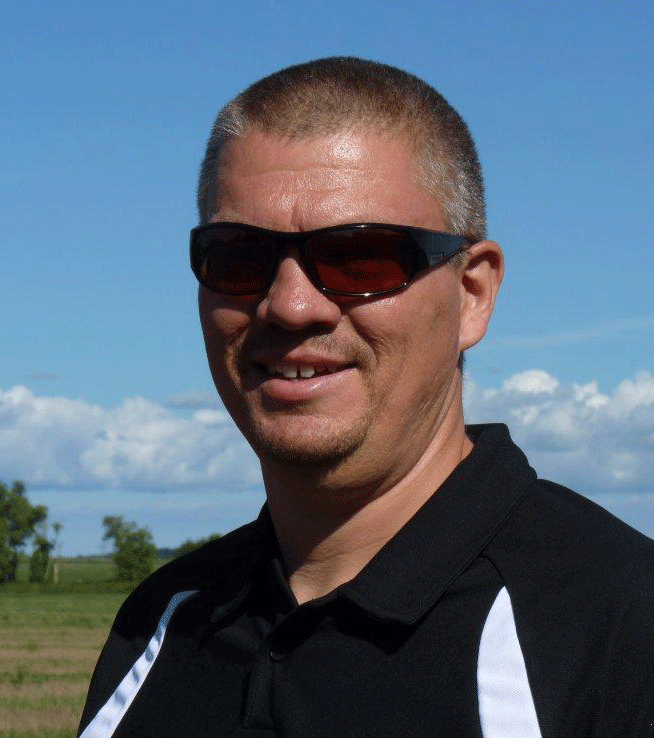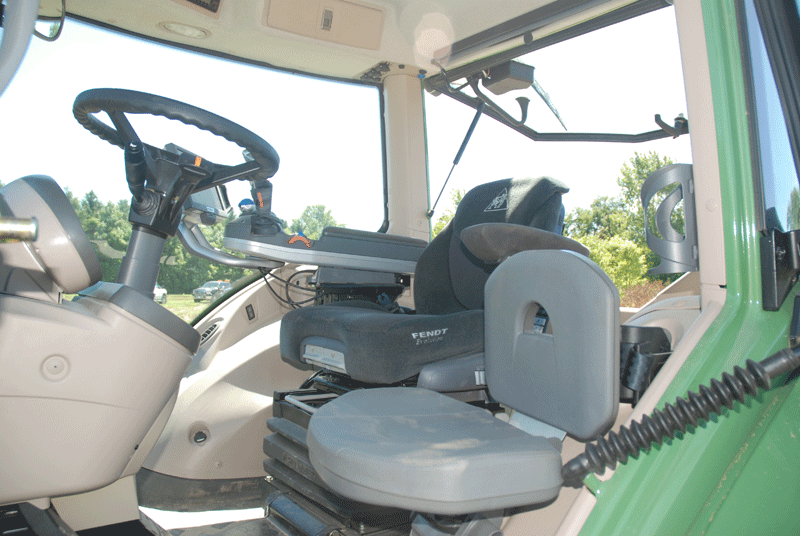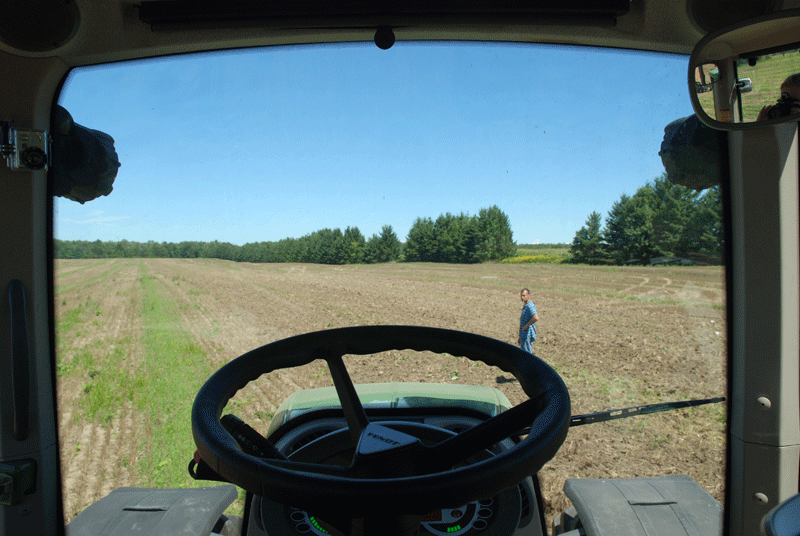Field tested: Fendt 828Vario Tractor
FENDT 828VARIO TRACTOR
A review by farmers for farmers



ed tollenaar jeff van loon dave vandewalle
MONKTON, ON DUBLIN, ON DUBLIN, ON
AS SOON AS you sit down inside the Fendt 828 Vario you notice something different. “You get in the seat and it automatically adjusts for the operator’s weight and size,” describes Dave Vandewalle, who owns a cash crop farm and hog finishing operation near Dublin, Ontario. “It’s not necessarily the reason I’d buy a tractor, but it was a neat feature right off the start.”
Ed Tollenaar, a cash crop farmer near Monkton, was also impressed right away. “I was surprised at how simple it was to drive. I was a bit intimidated by the tractor because I’d never driven a Fendt before. It’s actually quite simple and I enjoyed driving it.”
Another Fendt first timer, Jeff Van Loon, also had his preconceptions changed about the brand. “I’ve always heard that it’s not easy to drive, but I had no problems once the representative showed me a few things,” says the Dublin grain farmer. “It’s pretty intuitive actually.”
PHOTO: REVERSING DRIVER STATION

The Fendt 828 Vario is the largest of the 800 series tractors introduced in 2011. Fendt, a brand of AGCO, was the first to market a continuously variable transmission in 1995 based on research and development that had been in the works since the 1970s. The Vario transmission features two speed ranges, reaching up to 50 kilometres per hour or 35 kilometres per hour in reverse. Acceleration can be controlled through the joystick or the foot pedal.
control systems
“The foot pedal feature where the entire transmission is run by the foot pedal I think would be nice on the road, almost like driving a car” says Van Loon who also liked the joystick control. “The controls are laid out nicely. Everything is colour coded and it’s easy to figure out what does what.”
But that’s something Vandewalle disagrees on. “I was having a little difficulty figuring out the multiple functions, and the location of some of the main buttons wouldn’t necessarily be where I would place them,” he counters. “Not intuitive, that would be a good way to describe it.”
The tractor has a reversing driver station which turns the seat, system displays and all of the controls completely around — just like if you were driving forward.
“The cab was definitely larger than I thought it would be,” notes Tollenaar. “It was well put together and the controls and displays were located in an area where you’d have no problem driving it.”
However, Van Loon has an issue with the view from the cab. “I felt that the visibility out the windows was a bit limited, especially out the back window. And with the steering wheel tilt, I couldn’t seem to get it in the right position where I was comfortable and could still see the front display nicely.”
driveability
All three farmers agree the Fendt 828Vario provided a smooth and quiet ride.
“We have electronic engine management, which basically means the engine and transmission talk together,” notes Don Snetsinger, a product specialist for AGCO. “If you’re in a field ploughing at five miles an hour and the engine can pull that piece of equipment through the field at 1700 rpms, that’s what it will do to get you the best fuel efficiency; if it takes a little less horsepower, it will drop its rpms and still maintain speed.”
PHOTO: THE VIEW FROM THE CAB

“I think it handled the tillage equipment quite well,” says Tollenaar. “It’s a very versatile tractor.”
Snetsinger also says that the tractor has a stabilized front axle, which means the tractor will handle better when turning corners while driving at high speeds on the road. “We have a sensitivity on this engine where we can go from one to five right on the joystick. The tractor is very aggressive and takes off quickly and slows down very quickly.”
“As these tractors go faster and faster on the road, we need to look at braking systems that will help to safely stop the equipment we are pulling.” says Vandewalle. “One great feature the tractor has is the airbrake system. It allows you to hook up to wagons and use air brakes just like tractor trailers do on our highways.”
“Obviously when you decide to purchase a tractor you need to make sure it would suit your applications,” cautions Tollenaar. “This size may not be the size I would prefer, but I would certainly consider a Fendt tractor.”
Vandewalle also says the Fendt is worth a look. “This tractor has a lot of hydraulic capability. If you’re in the higher horsepower market, there are a lot of features that can be tailored to individual farms.”
Watch a video version of this review below:
In the next installment of Field Tested, we review the John Deere 7280R tractor. Look for it in December.
spec sheet
Engine rated power: 191(kW/hp) / 260 (ECE R24)
Engine max. power: 206 (kW/hp) / 280 (ECE R24)
No. of cylinders / cooling: 6/water
Rated engine speed: 2100 rpm
Engine speed at max. power: 1900 rpm
Optim. fuel consumption: 192 g/kWh
Fuel tank: 505 l
Oil change interval: 500 op. hrs.
Transmission type: continuously variable Vario transmission
Maximum speed: 50 km/h
Max. lift capacity, rear linkage on the drawbar: 11110 kN/kp
Max. lift capacity, front linkage: 5030 daN
Overall length: 5274 mm
Overall width: 2550 mm
Overall height: 3270 mm
Ground clearance: 567 mm
Min. turning circle: 5.4 m
Equipment provided by:
Connect Equipment Corporation
3982 Perth Line 26, Stratford, ON N5A 6S3
519-273-1740
www.connectequipment.com •






















